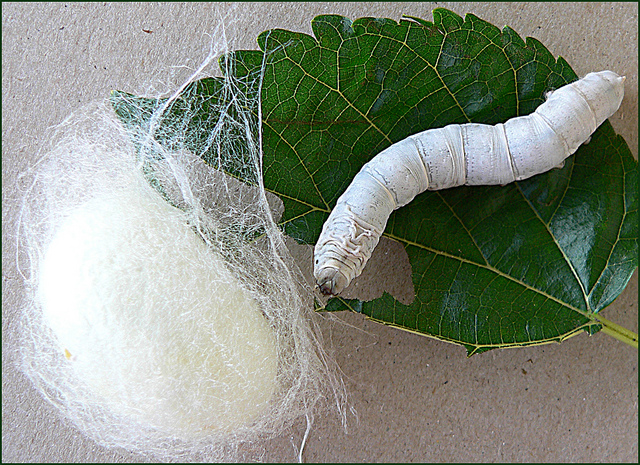
It was expensive to buy from New York and have items stagecoached out west. Brigham Young wanted his people to be self-sufficient, so it made sense that if the women wanted something, they should learn to make or grow it themselves. That is how the Silk Industry began.
Sisters wanted finer clothing items and fancier material, so Brigham came upon the idea to order silkworms from Europe and began planting Mulberry trees all over the state to provide food for the worms. On June 15, 1876, the Deseret Silk Association was organized with Zina D. H. Young as its first and only President. Poor Zina was in charge of this industry in spite of the fact she described the silkworms as “a terror”. There were as many as 5,000,000 silkworms in the territory being cared for by the women. Brigham Young had hoped the silk would not only provide clothing and fancy items for the women but be a money-producing export, but money was never made in this endeavor.
territory being cared for by the women. Brigham Young had hoped the silk would not only provide clothing and fancy items for the women but be a money-producing export, but money was never made in this endeavor.
There are many silk industry all-silk dresses that have survived the years, including one that was made for Susan B. Anthony as a gift and presented to her on her eightieth birthday. This dress is on display in Ms. Anthony’s home in Rochester, New York.
When the railroad came through, imports became less expensive. As the younger generation was expected to continue the silk industry, much of the enthusiasm was lost. Silk raising and manufacturing lasted for only about 50 years, but you will occasionally still run across a Mulberry tree from Logan all the way down to St. George.
This was an ad, placed by Brigham Young, in the Woman’s Exponent:
“Silk Worm Eggs—I have some forty ounces of silk worm eggs and a large number of mulberry trees, and the sisters who wish to raise silk are welcome to the eggs and to gather the leaves for feeding.”
Silkworm eggs were about the size of a pinhead before they hatched. They required constant care. Once they hatched, they would immediately demand food. It was common for a woman (wearing the eggs around her neck), upon hearing the eggs opening while attending a church meeting, having to run home to begin the feeding immediately.
Silkworms ate voraciously for forty days, only mulberry leaves. They had to be kept at a certain warm temperature, so often women would put them in a warm room, such as the kitchen or upstairs. As the worms chomped on their leaves and grew (which demanded space), sometimes a family would have to move out of their home, because of the noise, (made by the chewing of the leaves), and the overcrowding. The silkworms (needing lots of room to grow and good circulation), were the priority.
The worms would eat until they were about three inches long, then they would begin spinning their cocoons. This would take about forty-eight hours, and over 2 miles of silken fiber would be produced.

Mormon women were invited to the Chicago World’s Fair because at that time they were all working toward suffrage, speaking, and representing women, at the World’s Congress of Representative Women as well as creating the National and International Council of Women. This was a big deal, but that’s for another post. In the Mormon booth, they had women representing the silk industry as well. They were spinning, crocheting, and sewing with silk, and many handmade items were on display.
Women were very interested in home industry as a way to provide for their families. Husbands were often sent out on missions, providing for their polygamist families, or busy with church callings. As a result, women took it upon themselves to provide for themselves in many creative ventures.
That was a interesting tidbit to read:)
Very interesting! I’ve often thought about how we are encouraged not to work outside the home, and for a long time I’ve thought it meant married women with children aren’t supposed to work at all, but lately I’ve thought that if women could have a cottage industry-type business, then they could work IN the home, have work they can make for their children, be with and teach their children, and receive the self-esteem boost that comes from making a financial contribution to the family (be it ever so small).